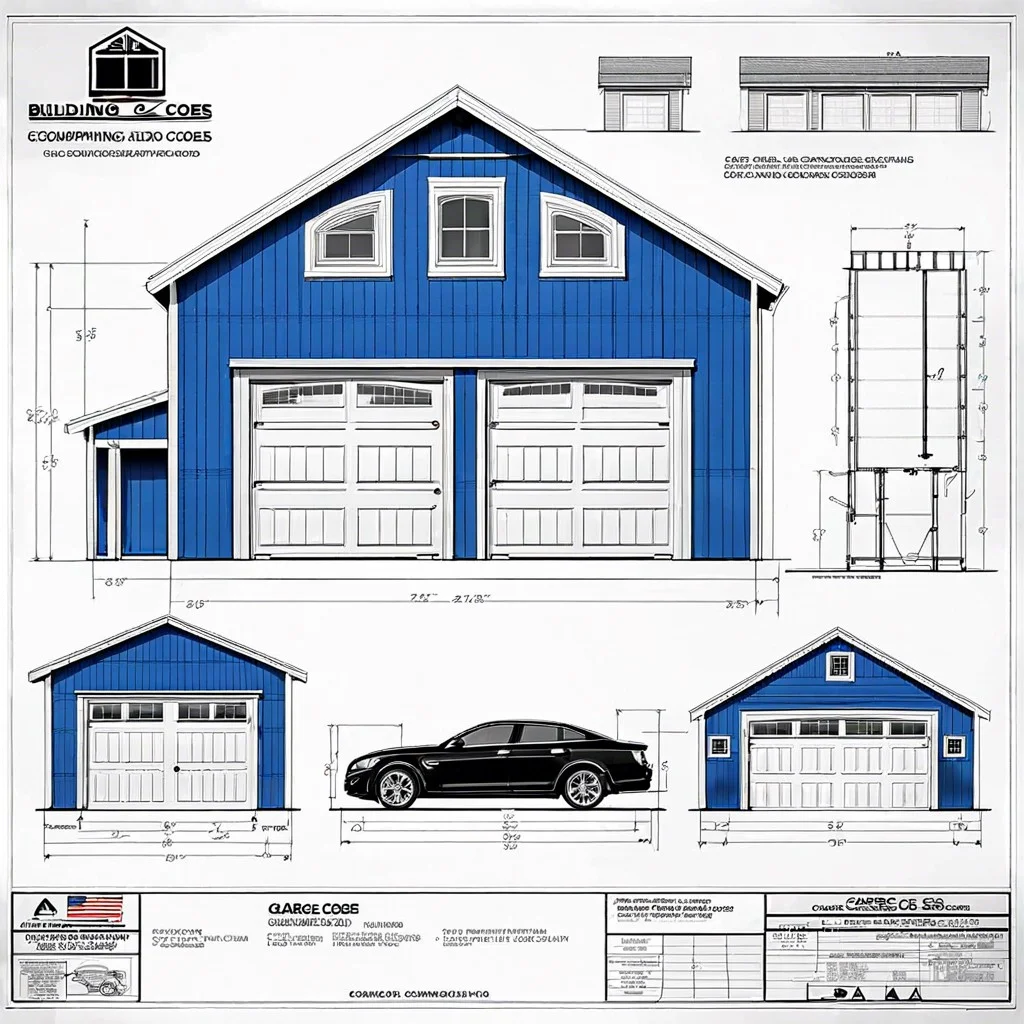Discover practical steps to transform your garage into an attractive and functional space, from wall finishing and flooring options to lighting and storage solutions.
Key takeaways:
- Building Codes: Check local regulations for safety and compliance.
- Permits: Obtain necessary permits to avoid code violations and future issues.
- Electricity: Understand local codes, plan for outlets, lighting, and surge protection.
- Garage Flooring: Consider epoxy, interlocking tiles, or concrete sealer for a polished look.
- Storage Solutions: Use ceiling racks, wall shelving, pegboards, and cabinetry for organization.
Building Codes

Double-check your local building codes before hammering away. These regulations act as a playbook for what you can and can’t do during your garage transformation. Some areas have strict rules about ventilation, electrical wiring, and even the type of wall materials allowed.
Remember, permits aren’t just red tape; they’re a safety net for both you and future owners. Securing the right permits prior to construction might seem like a hurdle, but think of it as crossing your T’s and dotting your I’s to avoid any future frowns from the city inspector.
Consider this: electricity is no joke in a finished garage where power tools or an extra fridge might find their home. The codes ensure your wiring can handle the load without throwing a tantrum or, worse, a fire. So take these guidelines to heart—they’re the unsung heroes of a successful finish.
Permits
Before swinging a hammer or running new wiring, check your local regulations. Any significant construction or renovation often requires a permit from the city or county. This isn’t red tape run amok—it’s for your safety and to maintain neighborhood standards.
Imagine investing time and money into a project, only to find out you’ve violated a code. Not ideal, right? To spare yourself this headache, a trip to the building department is in order. They’ll clue you in on what’s needed: maybe it’s just a simple form, or perhaps detailed drawings.
You might need inspections at certain stages of your project, too. Don’t let this step give you the jitters—they’re just making sure everything’s on the up and up. It’s a bit like a cooking show, where they check if you’ve got the recipe right. In the long run, dotting your i’s and crossing your t’s with permits can save you from a world of trouble—not to mention it keeps you in good graces with neighbors and future buyers.
Electricity
Before diving into the world of wires and volts, get to know your local codes. After all, safety first! Electricians are like the ninjas of the garage world, stealthily ensuring your garage has the power you need for tools, lights, and maybe even a fridge for those after-project cold ones. Consider what you plan to use the garage for. If you’re eyeing a workshop or gym, outlets will be your best friends.
Factor in the lighting, too. Brightness can turn a dingy garage into your own personal palace of productivity. Go for LED lights; they’re the superheroes of energy efficiency. And don’t forget about garage door openers. They like a steady diet of electricity, so make sure they’re not left out.
Lastly, remember that power surges are like kryptonite to electronics. A surge protector can save the day, keeping your tools and gear safe from unexpected spikes. Keep these pointers in mind, and you’ll have a garage that’s not just finished, but finished with a spark of brilliance.
Garage Flooring
Hard concrete underfoot can be a literal pain for those tackling DIY projects over a weekend. Sprucing up the floor with epoxy not only eases the strain on your soles but also adds a splash of professionalism to your space. This resilient material laughs in the face of spills, leaving your cleanup as simple as a wipe down.
Don’t fancy a slippery skate rink when the going gets oily? Slip-resistant additives can make your epoxy floor as surefooted as a mountain goat. And let’s talk colors; who said a garage has to stick to a boring gray? Go ahead, paint the town—or at least the floor—red, blue, or maybe a sleek charcoal.
If epoxy sounds like a commitment, interlocking floor tiles offer a no-glue approach to a fresh floor. Snap them together directly over your concrete for a quick transformation. Bonus: They come in various patterns and hues, allowing your inner artist to play.
For those on a tight budget, concrete sealer might be your wallet’s best friend. It’s like a raincoat for your floor, warding off moisture and stains. A weekend’s effort applying sealer can protect your concrete from wear and tear, a smart move for high-traffic garages.
Whatever route you take, remember, the floor sets the stage. Dress it wisely and your garage might just become your favorite room in the house. Who knew?
Storage Solutions
Maximizing your garage space can feel like playing a game of Tetris, but with the right moves, everything fits perfectly. Consider installing ceiling-mounted racks for seldom-used items; it’s a no-brainer! Wall shelving may welcome your tools and sports gear to their new homes. For those who swear by the “a place for everything and everything in its place” mantra, pegboards are lifesavers, offering customizable hooks and bins for a visually organized appeal. If you want to roll with the big leagues, cabinetry systems hide away the clutter while adding a professional touch. And don’t sidestep the corner spaces—corner shelves or rotating tool carousels can tap into that underused real estate. Remember, a well-organized garage saves you time and spares you headaches when you’re on a hunt for that one elusive screwdriver or garden shears.